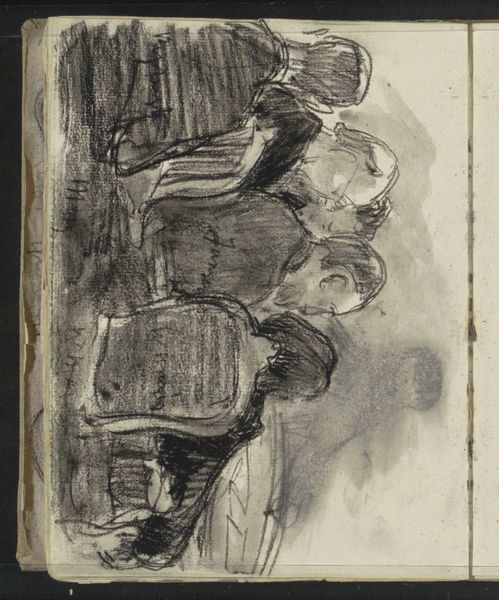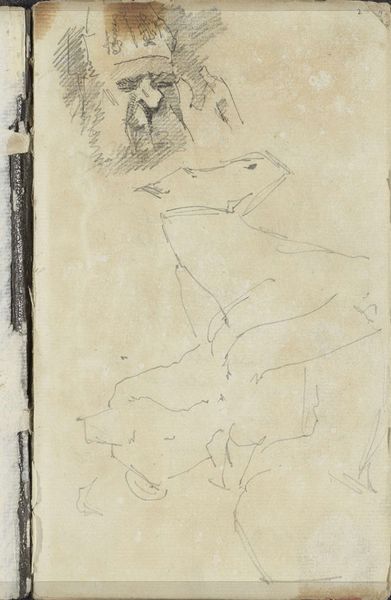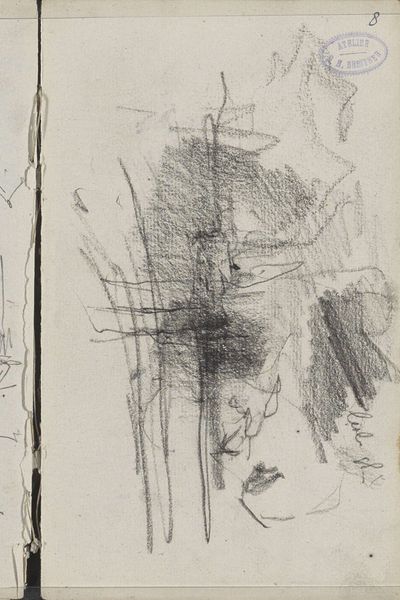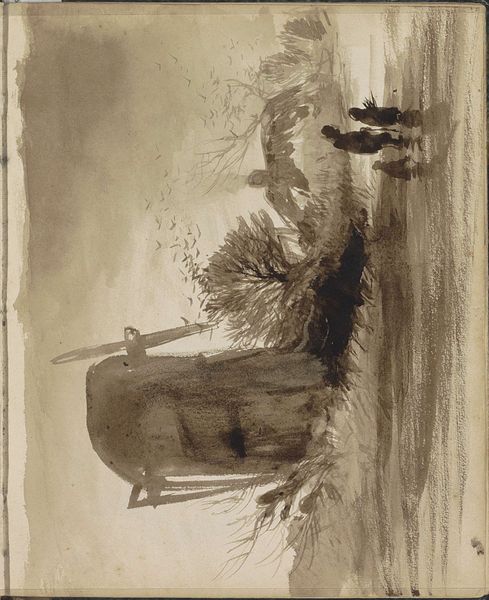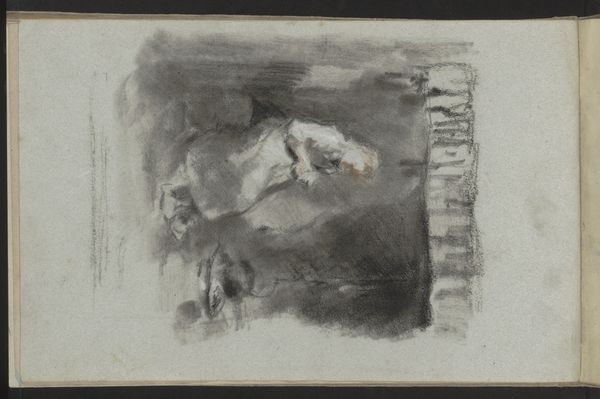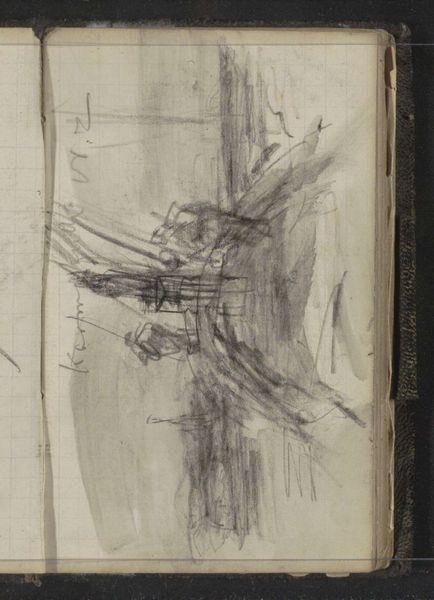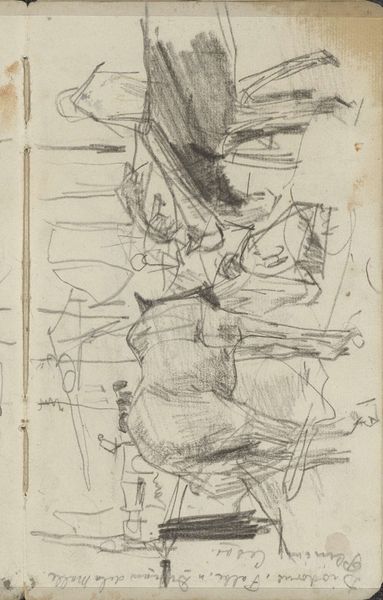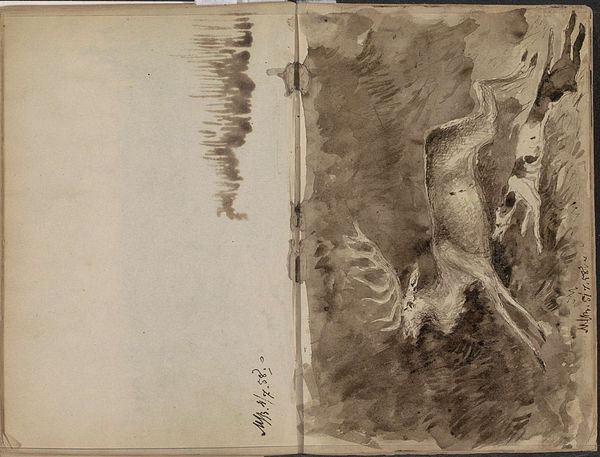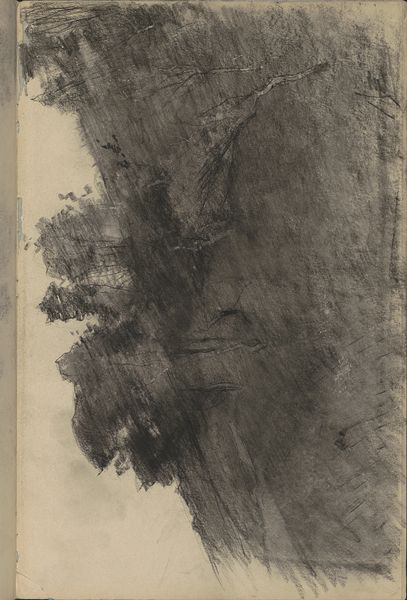
Copyright: Rijks Museum: Open Domain
Curator: I'm struck by the muted palette; it gives the scene a ghostly quality, almost as if we’re glimpsing a memory rather than a concrete place. Editor: Indeed. This is a watercolor and chalk drawing by Floris Arntzenius, titled "Ooievaar," created sometime between 1883 and 1914. What’s particularly interesting to me is how this unassuming landscape interacts with notions of Dutch identity, a symbolic reference that isn’t always overtly examined when interpreting Impressionistic works. Curator: Ah, the stork. In many cultures, including the Dutch, it's a powerful symbol. Here, amid these wispy, suggestive strokes, the stork takes on a somewhat melancholic feel, it has almost fallen into an unsettling background. This may be a depiction of nature threatened. Editor: Possibly. Arntzenius was very much part of The Hague School. They were at the vanguard of artistic developments, but they are very involved in representing contemporary Dutch society. This bird here may represent something more symbolic in society. In many social contexts the bird symbolises prosperity. I agree with your intimation, perhaps he is showing fragility. Curator: I see the stork almost caught, perhaps weighed down by what it has historically stood for. The sketchy strokes only deepen this. They bring a fleeting essence to it all. Is it an actual field study or more allegorical? Editor: It makes you consider the broader social context. Industrialisation was causing unprecedented change at the time, even for the artists themselves and I think artists can carry some guilt with the change they introduce into a society. Perhaps Arntzenius subtly voices these anxieties. The placement in the sketchbook also adds to the sense of impermanence, doesn't it? Curator: Yes, a fleeting vision. And what could be seen as melancholic could also reflect something akin to hope within transformation. Symbols shift, change, take on new meanings for new generations. This depiction opens those avenues to a cultural transformation. Editor: Well, viewing “Ooievaar” through the lenses of both intimate experience and collective anxiety certainly enrich our perspective. It shows the artist caught in between representing nature and society and I'm drawn into that relationship myself. Curator: Agreed, and I am seeing the symbol more widely, in the mind. Its open texture allows so much symbolic entry, rather than restricting it.
Comments
No comments
Be the first to comment and join the conversation on the ultimate creative platform.
